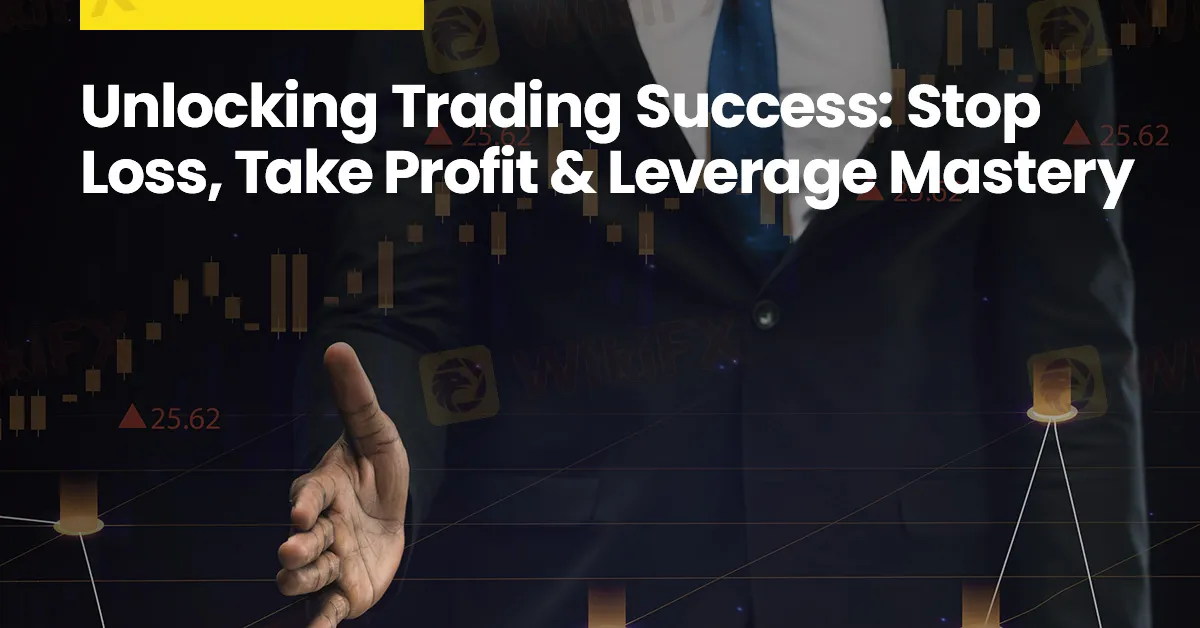简体中文
繁體中文
English
Pусский
日本語
ภาษาไทย
Tiếng Việt
Bahasa Indonesia
Español
हिन्दी
Filippiiniläinen
Français
Deutsch
Português
Türkçe
한국어
العربية
Unlocking Trading Success: Stop Loss, Take Profit & Leverage Mastery
Abstract:In the world of online trading, success is not just about making profitable trades—it's also about effectively managing risk. One of the most crucial aspects of risk management is setting stop loss and take profit points, as well as determining appropriate leverage levels.

In the world of online trading, success is not just about making profitable trades—it's also about effectively managing risk. One of the most crucial aspects of risk management is setting stop loss and take profit points, as well as determining appropriate leverage levels. Let's delve into these strategies to help traders navigate the markets with confidence and discipline.

Stop loss and take profit orders are essential tools for managing risk and ensuring that losses are kept within acceptable limits while allowing for potential profits to be realized.
A stop loss order is a predetermined price level at which a trader will exit a losing trade to limit potential losses. It serves as a safety net to protect against significant losses in case the market moves against the trader's position. When setting a stop loss, it's essential to consider factors such as market volatility, support and resistance levels, and the trader's risk tolerance. Placing stop losses too close to the entry price may result in premature exits, while setting them too far away could expose the trader to excessive losses.
A take profit order, on the other hand, is a predetermined price level at which a trader will exit a winning trade to lock in profits. It allows traders to capitalize on favourable market movements and avoid the temptation to hold onto winning positions for too long, potentially risking a reversal. When determining take profit levels, traders should consider factors such as key resistance levels, profit targets based on technical analysis, and overall market conditions.

Leverage can amplify both profits and losses in trading. While it can magnify potential gains, it also increases the risk of significant losses if trades move against the trader's position. Therefore, it's crucial to use leverage judiciously and implement risk management measures to mitigate potential losses.
Before engaging in leveraged trading, it is imperative for traders to conduct a thorough assessment of their risk tolerance and financial circumstances. It's crucial to use leverage only in amounts that traders can afford to lose without jeopardizing their financial stability. Typically, conservative traders may opt for lower leverage levels, prioritizing capital preservation over potential gains, while more aggressive traders may opt for higher leverage to potentially amplify profits.
In addition to assessing risk tolerance, implementing leverage limits is a key strategy for managing risk effectively. By setting leverage limits, traders can maintain control over their exposure in the market and prevent overexposure. Many trading platforms offer adjustable leverage settings, allowing traders to tailor their leverage levels to their risk management strategy. This enables traders to avoid taking excessive risks and safeguard their trading capital against significant losses.
Furthermore, closely monitoring margin requirements is essential for mitigating risk in leveraged trading. Traders should regularly assess their account equity to ensure it is sufficient to support their leveraged positions. Margin calls, which occur when account equity falls below required levels, can lead to forced liquidation of positions and substantial losses. By staying informed about margin requirements and proactively managing their account equity, traders can minimize the risk of margin calls and preserve their capital. This diligent approach to risk management is fundamental for maintaining stability and longevity in the volatile world of leveraged trading.
In the fast-paced world of trading, effective risk management is essential for long-term success. By implementing strategies such as setting stop loss and take profit points and managing leverage levels, traders can minimize losses, protect their capital, and maximize their chances of profitability. Remember, disciplined risk management is the cornerstone of profitable trading, so always prioritize capital preservation and trade responsibly.

Disclaimer:
The views in this article only represent the author's personal views, and do not constitute investment advice on this platform. This platform does not guarantee the accuracy, completeness and timeliness of the information in the article, and will not be liable for any loss caused by the use of or reliance on the information in the article.
Read more

How Did the Dollar Become the "Dominant Currency"?
Since the fourth quarter of last year, the strong trend of the U.S. dollar has intensified, and as we enter 2025, investors face a contradictory situation.

How to Automate Forex and Crypto Trading for Better Profits
Find out how automating Forex and crypto trading is changing the game. Explore the tools, strategies, and steps traders use to save time and maximize profits.

Is Infinox a Safe Broker?
INFINOX, founded in 2009 in London, UK, is a regulated online broker under the UK FCA. It offers diverse trading instruments like forex, stocks, commodities, indices, and futures. Clients can choose between STP and ECN accounts and access educational resources. With 24/7 customer support, INFINOX aims to empower traders with reliable tools and guidance.

Is Your Zodiac Sign Fated for Stock Market Success in 2025?
The idea that astrology could influence success in the stock market may seem improbable, yet many traders find value in examining personality traits linked to their zodiac signs. While it may not replace market analysis, understanding these tendencies might offer insights into trading behaviour.
WikiFX Broker
Latest News
How to Automate Forex and Crypto Trading for Better Profits
Is Infinox a Safe Broker?
How Did the Dollar Become the "Dominant Currency"?
Is Your Zodiac Sign Fated for Stock Market Success in 2025?
Currency Calculator






